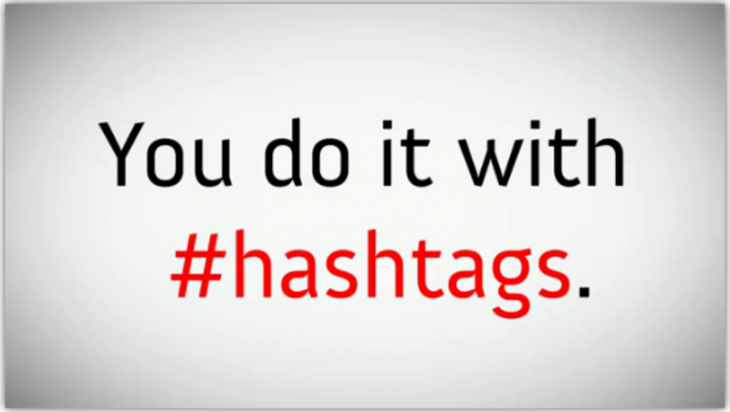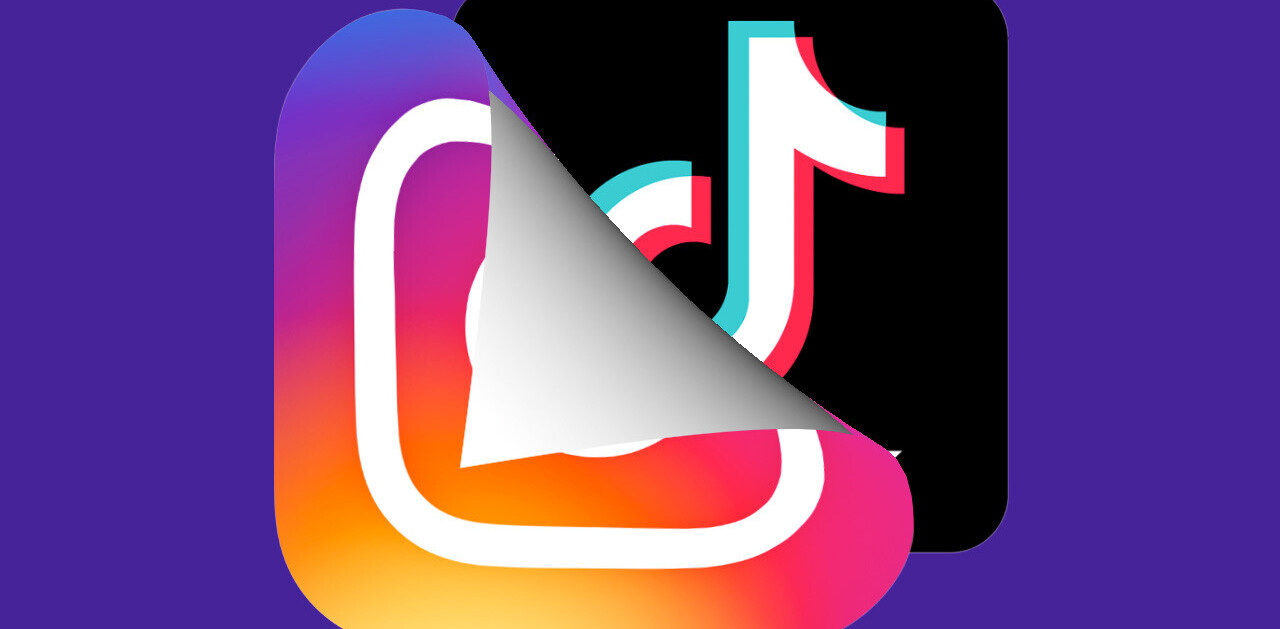
Courtney Boyd Myers is the founder of audience.io, a transatlantic company designed to help New York and London based technology startups grow internationally. This post originally appeared on the Attending blog.
At some point in time, your marketing or PR team will decide it’s time to host an event. A startup party is a great way to get your brand name out there, meet new customers, and celebrate your survival in the fast lane. So, what do they teach you in Event Marketing 101?
Planning, promoting and hosting a tech event is no easy feat. It takes the organizational skills of a school teacher and a masters degree in crisis management. But who doesn’t love a good startup party? The creativity. The buzz! The free booze. The hype!
Before you put your party hat on, the first question you’ll want to ask yourself is “Why?”
I. Planning the world’s best startup party
1. Defining the purpose
Do you want to raise your brand profile? Educate the market on what you do? Promote a new product you’re releasing? Or just generate new leads to grow your customer database?
The most obvious event to raise your brand profile is the epic “launch event”! Some of the best launch parties of the past few years include YPlan’s New York launch, General Assembly’s London launch and Zady’s first unveiling. These were successful events because they had the right people in the room, scored a ton of press and left everyone with warm and fuzzy feelings about the brand.
Holiday parties and satellite events at big conferences like SXSW are another great way to make a splash. Twilio is known for its epic Christmas party year after year, which offers an open bar, bowling, bumper cars, video games, ping pong, table tennis and free rides home from Uber.
At SXSW 2014, General Assembly partnered with SplashThat and Maveron to throw a party called Lunar Kaleidoscope. The party picked up a lot of buzz on social media, and ended up collecting over 10,000 RSVPs.
While the party could only admit a few hundred at a time, it was a fantastic way to build an email list. To increase the buzz factor and reason for celebration, GA announced its $30 million C series funding round at the start of SXSW.
Can’t find your party pants? An educational event is a great way to keep in touch with current customers and meet with potential new ones. Educational events may include classes, workshops, seminars, training or even small conferences.
You can host a class or workshop on your own for a rather low budget, usually just by providing drinks and snacks. And if you don’t want to do the heavy lifting like securing a venue and marketing the event, partner with an education company like General Assembly, Decoded, or event spaces like WeWork and Google Campus.
More intimate events, like dinner parties, are another great way to connect one-on-one with “influencers” who have the capability to change the course of your business. Folks of this nature generally include journalists, VCs, angel investors, founders and their BD-minded employees.
Hot tip: Trying to build a mailing list? Play it safe and offer folks an opt-in option when they RSVP for your event. Both Attending and Eventbrite offer this feature.
2. Finding a venue
“Venues are notoriously cheap,” says Benjamin Southworth, co-founder of London-based events company The 3-Beards. “And their catering is notoriously expensive. When you start budgeting for sponsorship, always ask about hidden venue costs.”
Some good questions to get you started: What is the size of event? What kind of ambiance are you looking for? Will the venue offer catering? Or can you bring your own beer and food in? Is there WiFi? Access to bathrooms? A coat check? A decent A/V setup? If it’s a bar or restaurant, will there be a minimum spend to book it out? Does the venue have insurance?
“There are a million things you need to think of when planning a party,” says ZeShan Malik, the Founder of Melee Media, a NYC-based events company. “Often times things like liquor permits and insurance are overlooked because there’s never enough time or it’s an easy thing to cut out of the budget.
“But the liabilities associated with overlooking these items, well, they’re weighty enough to put a small startup out of business.”
The chosen venue can make or break your party. Don’t host a summer party in a downstairs bar and don’t pay for outdoor space for a party in the middle of winter! Think of how your guests will react the moment they walk through the front door. What will make them go “Wow!”?
“We tend to work venue-first,” says Southworth. “So, we’ll go through a list of our preferred venues, then we work out what events we’re going to put on.”
Hot tip: Think outside the box. Ask a coffee shop if you can throw an after hours event or a club for a daytime event. Don’t have space for a 20-person dinner party in your home? Rent an Airbnb instead!
3. Budget
If you’re a young tech startup, blowing $50,000 on a launch party isn’t going to sit well with your investors. Or maybe it will, if it generates $250,000 in new revenue.
Most startup parties are free, which means all the costs are on you as the party planner. “We frown upon charging tickets,” says Mallory Blair, the co-founder of Small Girls PR. “You want people to download your app or buy your product, not purchase a ticket to your event.”
When determining your party budget, try to understand how you’ll measure success (and how much cash you have to spare). While the ROI of events and PR is hard to measure, there are ways.
If your CEO is asking you to calculate an event’s ROI, here are a couple of ways you can set yourself up for success:
- Measure social media mentions
- Count new emails generated from RSVP confirmations
- Use referral links to track lead and sales generation
Another way to budget for a party is to get sponsors on board. Larger brands and service providers like law, accounting, and recruitment firms often provide capital in exchange for promotion to a young, savvy crowd. Check out who sponsors events similar to yours and find an intro, or try to get in touch by emailing the company’s support team.
Sponsors will ask that the event is co-branded in some way, so be creative! Solely mentioning them on social media and putting their name on an invite is boring.
Ask the sponsor to pay for a specific part of the party, like dinner, drinks, branded cupcakes or a Dunk Tank that will be sure to leave an impression.
You’ll quickly learn that events are front-loaded with expenses so ask for the money in advance. After the event, send a heartfelt thank you note and if you see a tweet or Facebook post about a sponsor from an attendee, copy that message and send it!
Hot tip: Be careful getting sponsors if it’s your company’s launch party. You don’t want to get lost in all of the promotional messaging!
4. Audience

When curating your invite list, think about who you want in the room. Do you want a room full of journalists? Or none at all?
In April 2014, we hosted a World Domination Brunch party, sponsored by a recruiting firm. We partnered with a connected friend and pulled together a really A+ lineup of attendees including entrepreneurs, investors, and media. We decided on a silly theme, so we were careful to note when inviting journalists that the event was off-the-record.
Remember to keep your audience in mind when party planning. What does a good time look like to them?
For example, if you’ve invited a group of Fortune 100 CMOs out on a Tuesday night, don’t invite them to a cash bar and serve fried food. Invite them to a dinner party or a cocktail affair in a nice venue with fancy canapés.
While activities like ice breakers during a party are great for engagement, they might not work well with a crowd that simply wants to let loose on a Friday night.
Hot tip: Always plan for a 50 percent turnout for free events. If you want 100 people at your party, invite 200.
5. Timing
First pick a date, and then pick two to three backup dates to give yourself flexibility as you approach potential venues. Like budget, always give yourself more time than you think you need.
Play it safe with five to eight weeks of advanced planning time for any event with over 40 people. For events like dinner parties with less than 20 people, three weeks is a good minimum prep and promotion time. Any less time and you’ll experience unnecessary stress!
Are you organizing a small event and need input from your guests to choose a time and date? Doodle makes scheduling simpler by allowing groups of people to have their say in a poll.
Hot tip: Ordering branded items or anything physical like a “Step and Repeat” takes time and will cost you triple if you’re asking for overnight turnaround.
6. The finishing touches
Schwag bags! Some of the best schwag items we’ve seen at startup parties include branded umbrellas and branded squirt guns (which would go nicely together!)
Need food and drink ideas? Look no further than Pinterest for party planning inspiration. Also, don’t forget to purchase nonalcoholic beverages for those who need a night off or who don’t drink.
Music! In the past, we’ve had The Glitches play an acoustic set at our SHADOW London dinner, a harpist perform at our Makeshift Heaven and Hell party and of course, or if you need a DJ in New York, Sean Glass is your man!
Hot tip: Treat your vendors with respect. “I’ve been using the same printer (who makes branded signs and vinyl for vehicle wraps for example) for almost eight years. I send her Christmas presents, I ask about her husband and grandkids, she feels like she’s a part of my team, because she is,” says Malik of Melee Media.
II. Promoting the world’s best startup party
“When we first started throwing events, no one knew who we were,” says Ben Southworth of The 3-Beards. “Of the 70 people who came to our first event, we invited each person individually and manually entered their details into Eventbrite for them. Since then we’ve grown our mailing list and our Twitter following massively, so it’s become a lot easier to fill events!”
1. Create a beautiful landing page
Eventbrite: Eventbrite is the mothership of all event apps. While bloated, Eventbrite comes with almost every feature you could possibly need to host an event as small as a dinner and as big as a conference.
SplashThat: Packed with hundreds of design options for events of all sizes, use this one whether your event is free or ticketed. It provides social sharing options and your featured image included in your invite reminders.
Hot tip: When creating the event page, make sure you have all your design assets handy and be sure to have multiple people run through the RSVP process to check for spelling errors, faulty links or missing copy.
2. Pick your partners
“We don’t do events on their own,” says Mallory Blair of Small Girls PR. “We always tie them into an online campaign and include relevant partnerships.”
Blair is a fan of partnering with a charity for events, when appropriate. For their prom dress startup event, they partnered with The Lower East Side Girls Club so guests could donate their old prom dresses to girls in need.
The charity angle meant that it was easier for Blair to convince socialites like Becka Diamond and Scott Lips to get involved. Whoever raised the most support on social media for the charity would be crowned Prom King and Queen.
Hot tip: Ask all of your partners for their support in promoting the party via social media, blog posts and newsletters.
3. Tap VIPs
Blair from SmallGirlsPR often taps industry influencers to co-host her startup parties. Create value for VIPs (such as inviting them to host and earn publicity in the process), and in exchange work out cross-promotion of your event.
At SXSW, Emily Gannett of IRL Productions worked with the company Conduit to host Get Sauced, a BBQ sauce-making competition.
“Founders like Steve Martocci of GroupMe and Alexis Juneja of Curbed Network competed to make the best sauce, and their names were on the invite as competitors,” she says. “While it was basically a pool-side cocktail party, we added this fun element that really helped us promote it.”
Hot tip: During the event, engagement on Instagram is likely more powerful than Twitter, so tap influencers who like to post filtered photos to their millions of followers!
4. Pick your channels
During university, parties spread like wildfire through word of mouth. Now, with social media, they spread through word of “mouse.”
Promote your party accordingly on social media channels, Facebook, Twitter, and maybe even Linkedin. You can also post your startup event on sites like Startup Digest, Tech City News, The Fetch, and Gary’s Guide.
Hot tip: Send a reminder email to guests one to two days before the event so it’s fresh in everyone’s mind.
5. A note on exclusivity
While it may not work in every care, consider making your event exclusive if it seems right.
“We are 100 percent behind the idea of making your startup’s event list exclusive, in fact, we rarely do public events. Exclusivity is an inherent draw, it makes attendees feel special while simultaneously ensuring a crowd that those invited might be interested in meeting,” says Mallory of Small Girls PR.
III. Hosting the world’s best startup party
1. Get help
Hire a team to help you manage the logistics of the party, like running the door, bartending and taking photos. This frees you up to be the perfect party host you were always born to be!
The most important thing to understand the day of an event is that “something will always go wrong,” says Malik. “And that’s cool. That’s the whole game. The battle is reacting quickly and knowing how to problem solve.”
Hot tip: If you’re low on budget, invite volunteers from local universities to help who can in turn enjoy the party for free.
2. Should you use hashtags?
Hashtags are great when you’re lying in bed the next morning searching through photos on Instagram and comments on Twitter. Encouraging attendees to hashtag their photos and tweets is always a good idea.
However, attempts to ask participants to engage in a contest during an event tend to fall flat.
Hot tip: Make sure the hashtag is memorable and clearly marked on all party materials.
3. The toast
Always take the time at events to inform your audience of why they’re there. This might include a heartfelt speech or even a live demo of your product or service (remember to keep it short and inspirational!).
For launch events, a keynote speaker can be particularly effective, lending clout to your brand and making for an interesting bit of content for the audience.
Hot tip: Ben Southworth reminds us to watch our alcohol consumption!
4. Set a scene that everyone will remember
We first met ZeShan at a Gawker Media party in 2010. He was projecting live images of the party from the rooftop onto the facade of the New Museum across the street. This drove a ton of buzz as pedestrians walked by wondering what was going on.
We’ll never forget the General Assembly launch party or the 3460 Miles 4th of July bash because at each, we ordered over 200 sparklers. When the sun set and the party guests were feeling toasty, we passed out over 200 sparklers and lighters. The guests went wild.
Hot tip: Pass out sparklers at an outdoor party only!
5. The after party
Was the party a success? Are you waking up covered in streamers and silly string? Is your Twitter blowing up with thank you’s and have your partners already emailed you letting you know the night was a success? Great!
Or did the power suddenly go out at midnight and half of your guests leave? Did the booze run out early? Was the food terrible?
Remember that throwing parties and hosting events is an on-going learning process. And that guests are much more forgiving than you might imagine, as long as you don’t give them all food poisoning.
In the age of digital everything, events are the truly timeless way of getting in touch with your customers in the offline “real” world. While costly and time-consuming, they are a tremendous way to get your brand out there and celebrate your well-deserved wins!
So, what are you waiting for? It’s never too late to start planning your next epic startup party!
Get the TNW newsletter
Get the most important tech news in your inbox each week.

















